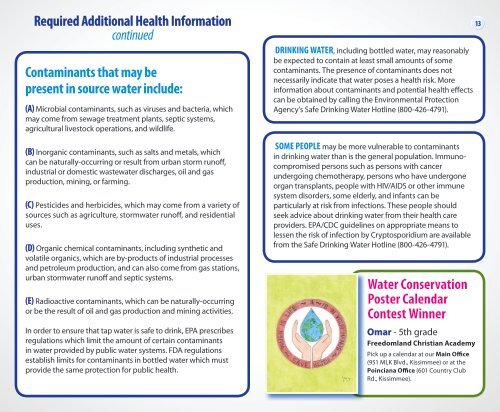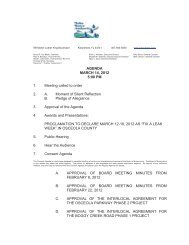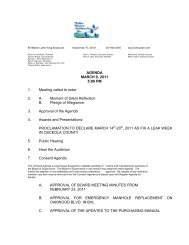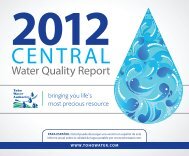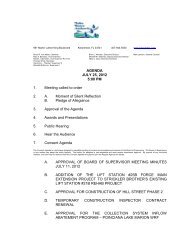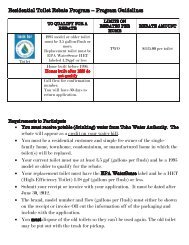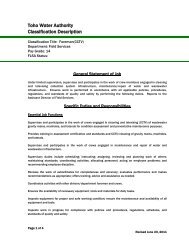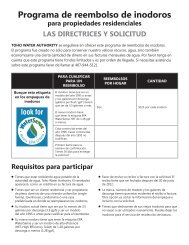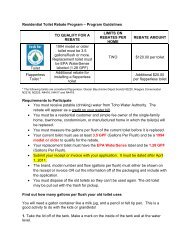Eastern Report - Toho Water Authority
Eastern Report - Toho Water Authority
Eastern Report - Toho Water Authority
Create successful ePaper yourself
Turn your PDF publications into a flip-book with our unique Google optimized e-Paper software.
Required Additional Health Information<br />
continued<br />
Contaminants that may be<br />
present in source water include:<br />
(A) Microbial contaminants, such as viruses and bacteria, which<br />
may come from sewage treatment plants, septic systems,<br />
agricultural livestock operations, and wildlife.<br />
(B) Inorganic contaminants, such as salts and metals, which<br />
can be naturally-occurring or result from urban storm runoff,<br />
industrial or domestic wastewater discharges, oil and gas<br />
production, mining, or farming.<br />
(C) Pesticides and herbicides, which may come from a variety of<br />
sources such as agriculture, stormwater runoff, and residential<br />
uses.<br />
(D) Organic chemical contaminants, including synthetic and<br />
volatile organics, which are by-products of industrial processes<br />
and petroleum production, and can also come from gas stations,<br />
urban stormwater runoff and septic systems.<br />
(E) Radioactive contaminants, which can be naturally-occurring<br />
or be the result of oil and gas production and mining activities.<br />
In order to ensure that tap water is safe to drink, EPA prescribes<br />
regulations which limit the amount of certain contaminants<br />
in water provided by public water systems. FDA regulations<br />
establish limits for contaminants in bottled water which must<br />
provide the same protection for public health.<br />
Drinking water, including bottled water, may reasonably<br />
be expected to contain at least small amounts of some<br />
contaminants. The presence of contaminants does not<br />
necessarily indicate that water poses a health risk. More<br />
information about contaminants and potential health effects<br />
can be obtained by calling the Environmental Protection<br />
Agency’s Safe Drinking <strong>Water</strong> Hotline (800-426-4791).<br />
Some people may be more vulnerable to contaminants<br />
in drinking water than is the general population. Immunocompromised<br />
persons such as persons with cancer<br />
undergoing chemotherapy, persons who have undergone<br />
organ transplants, people with HIV/AIDS or other immune<br />
system disorders, some elderly, and infants can be<br />
particularly at risk from infections. These people should<br />
seek advice about drinking water from their health care<br />
providers. EPA/CDC guidelines on appropriate means to<br />
lessen the risk of infection by Cryptosporidium are available<br />
from the Safe Drinking <strong>Water</strong> Hotline (800-426-4791).<br />
<strong>Water</strong> Conservation<br />
Poster Calendar<br />
Contest Winner<br />
Omar - 5th grade<br />
Freedomland Christian Academy<br />
Pick up a calendar at our Main Office<br />
(951 MLK Blvd., Kissimmee) or at the<br />
Poinciana Office (601 Country Club<br />
Rd., Kissimmee).<br />
13


